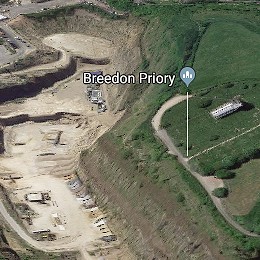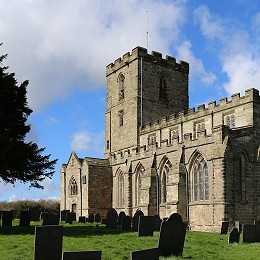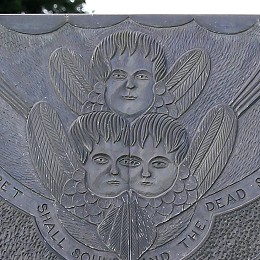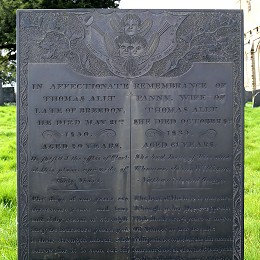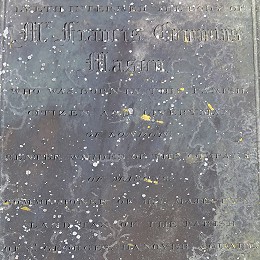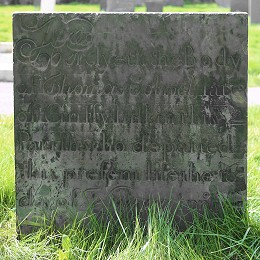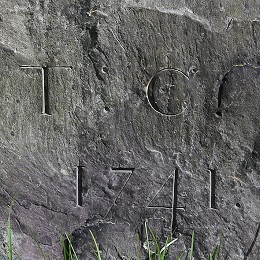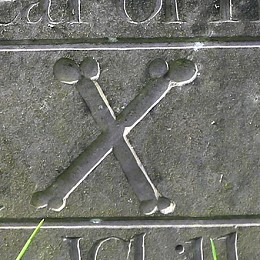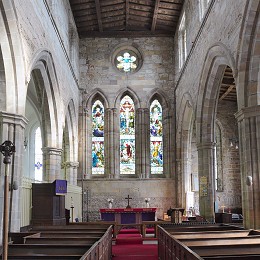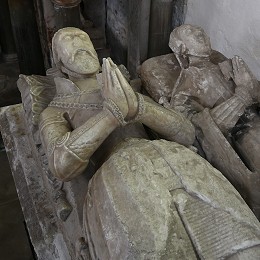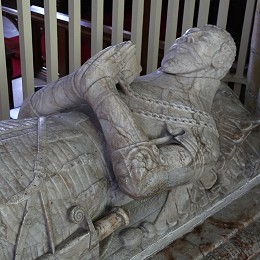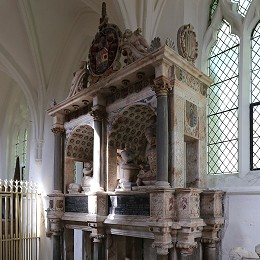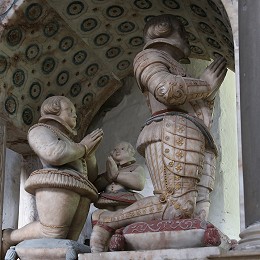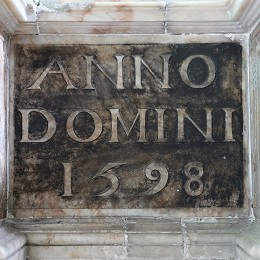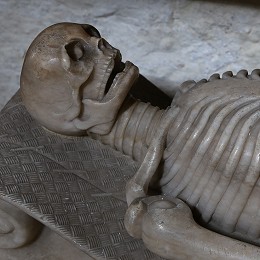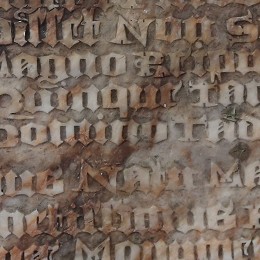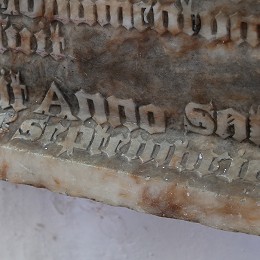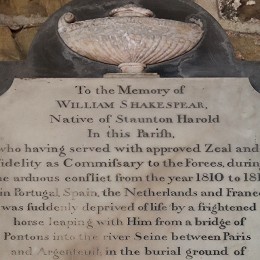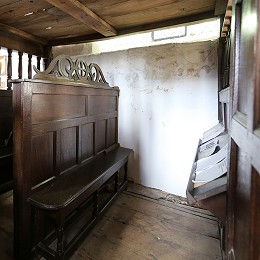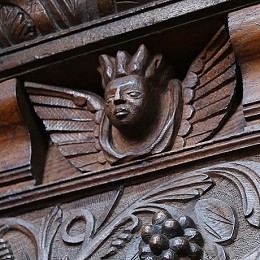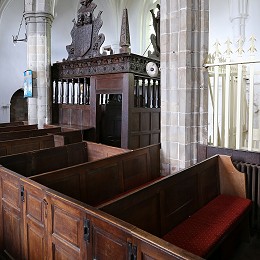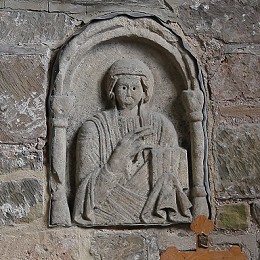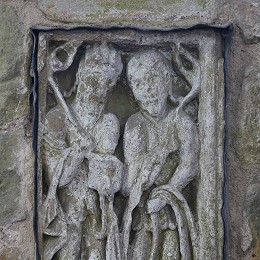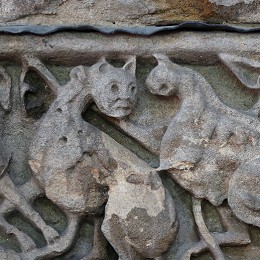
Home | Why PoorFrankRaw? | Contact | Shop
Ss Mary and Hardulph, Breedon on the Hill, Leicestershire
21/03/2017: (Open). This church is also known as Breedon Priory. The hill which gives this place the name has been quarried away on one side, so the views of and from the church are impressive. (First image © Google.) On the day I visited there was a nasty wind - the site of the church is very exposed so wrap up warm...
The first headstone here caught my eye because of the odd arrangement of three angels at the top. I also like to see any text which reminds me of Handel's Messiah and this one has "The trumpet shall sound and the dead shall be raised". The doggerel verse beneath the details of Fanny Allt mentions the cause of her death at the age of 61 - "illness sore, 4 years or more, of Cancer in her breast".
A horizontal tomb-top stone records part of the story of a local boy who went on to greater things. Francis Cummins, a mason, became a liveryman and Renter Warden (one of the officers) of the Worshipful Company of Masons in London. He was also Commissioner of His Majesty's Land Tax for the parish of St George's, Hanover Square.
The Swithland slate headstone for Thomas Colwel is attractive but unremarkable on the front where the usual details are recorded, but the back has his initials (twice) and date of death. One of the sets of initials is carved by an inexpert hand, the other set and the date are perfectly well executed.
The Swithland slate headstone for Elizabeth Stevenson is lightly decorated at the top, in keeping with its date of 1739. Lower down the stone is an oddly placed and naiively carved memento mori pair of crossed bones. They remind me of bones you would see in a kid's comic.
Inside the church can be found a number of Anglo-Saxon carvings (apparently from the early 9th century), set into the wall, and a number of large monuments to the Shirley family and the Shirley family's own large box pew (more of a room really). The grandest of the monuments is for Sir George Shirley who died in 1622, though the monument was built before he died and is dated 1598. The three storey monument has an alabaster carved skeleton in the bottom section. The Wikipedia entry for this church describes the skeleton as "realistic". Whoever wrote that has never seen a skeleton.
The most subtle of the Shirley memorials is an alabaster plaque for Sir John Shirley, dated 1570. The plaque has an integral, simple moulding frame. The (Latin) inscription is in raised gothic lettering, beautifully laid out and cut. The first and last lines run along the upper and lower frame. Gorgeous.
The church has a monument to William Shakespear (not that one) of nearby Staunton Harold. He died when his horse jumped from a pontoon bridge into the Seine between Paris and Argenteuil (where he is buried) taking him with it. The monument doesn't say if the horse died too.
The Shirley family pew was built in 1627 and may have been sited in the nave originally. It now stands in the north aisle along with the Shirley monuments. The rest of the box pews are from the 18th century.
The Anglo-Saxon carvings in the church are well documented elsewhere, but here are a few shots to tempt you to visit them for yourself.
